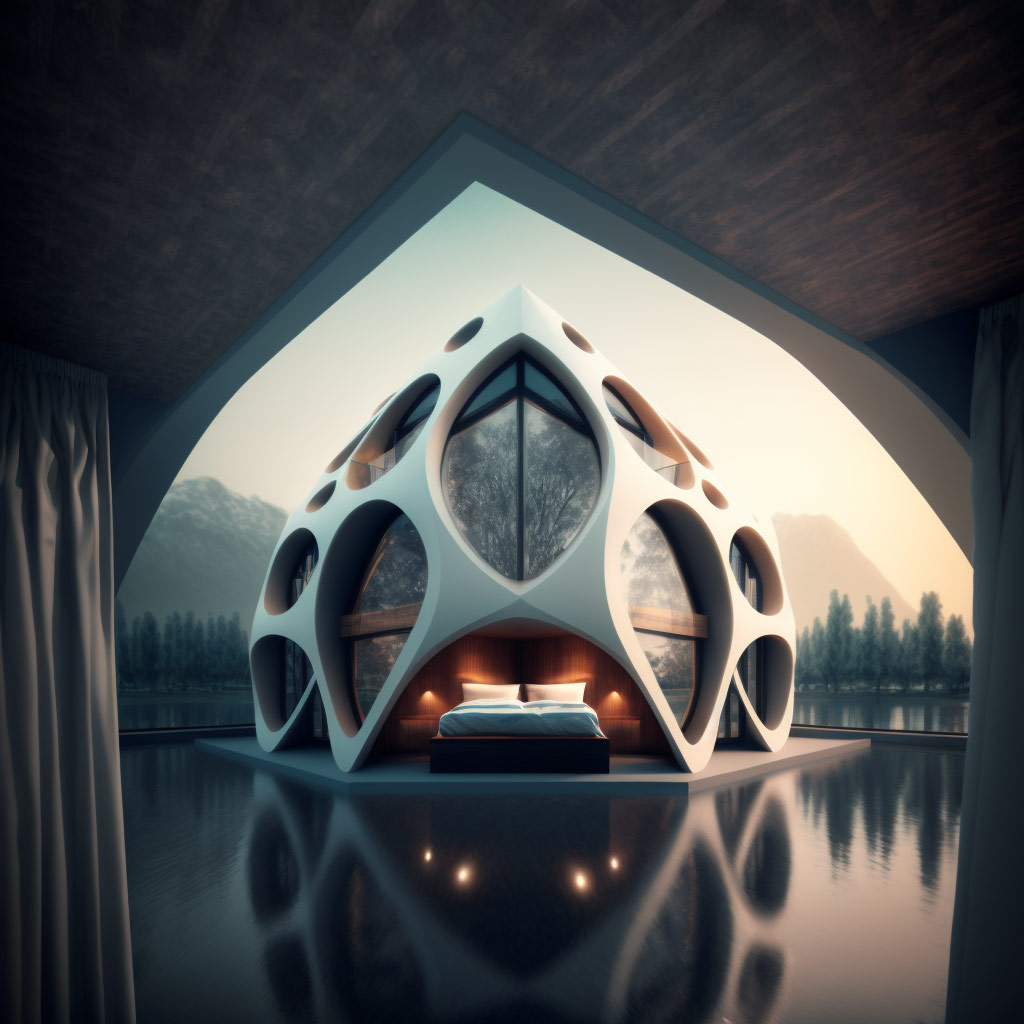House of Sierpinski Triangle was designed by Nick Leung as part of PAACADEMY‘s “Midjourney Architecture 3.0” studio with Tim Fu. The project was primarily about getting a feel for a more structured approach to using Ai imaging in the workflow of a creative design project (specifically in the context of architecture.)
Inspiration


According to Nick, in 2018-2019 for his MArch course, he spent several months studying fractal geometry. The course was designed around exploring fractals in the context of the relationship between emerging fabrication tools and parametric design. Although the subject is highly abstract in nature, he finds it quite interesting to explore how it could affect architectural technologies.
Designing House of Sierpinski Triangle


Being new to Ai imaging, the process was heavily driven by curiosity. With such a powerful tool, it is easy to very quickly get lost in any number of rabbit holes. It is like working with someone that is the very best at what they do, but they do not speak the same language as you. There is a lot of trial and error, but he found that the ‘blend’ tool in particular allowed him to have a surprisingly high degree of control over the output after many generations.
Working with AI


Nick has no prior experience with Ai imaging tools, but he was able to draw a lot of experience from his computational design background. Like Rhino’s Grasshopper, it feels like a tool that simply allows you to explore ideas, and iterate with various parameters very quickly.
Although Nick was very confident with his Photoshop skills, he opted to not edit the output images manually very much. Nick thinks that forcing myself to learn how to be more preside with the tool is more interesting for now.
According to Nick, it’s a super hard balance trying to create geometry that is interesting at true to the original geometry, while also creating architecture that would be nice to experience. The more computationally interesting ones tend to be cooler, but not welcoming. He also finds it tough to not get too obsessive about it, as so many of the results can be taken in very different and interesting directions
Conclusion


He feels like he was a bit late to the party, that Ai imaging has really exploded over the last few months, and that particularly recently, people have been getting a lot more controlled, quality output out of MJ.
He argues that there’s a strong argument to be made that Midjourney architecture is just eye candy; it’s purely formed over function. On one hand, it enables anyone to discover, combine, and iterate on highly beautiful imagery at unprecedented rates. But it doesn’t really do anything in the way of real-world problem-solving, which he believes should always be a key aspect of architectural design. Nick believes it is comparable to any technology that has come before it: ultimately it is just a tool. But it is also a ridiculously powerful tool, and he struggles to describe with words just how insane these Ai tools are getting; it feels like genuine magic.
Nick finds that MJ as a tool is out of this world in its own right, but it is particularly interesting thinking about what changes it will have on the architecture industry, whether people like it or not.
*The text was provided by Nick Leung and reviewed by PA Editorial Team.




















Leave a comment